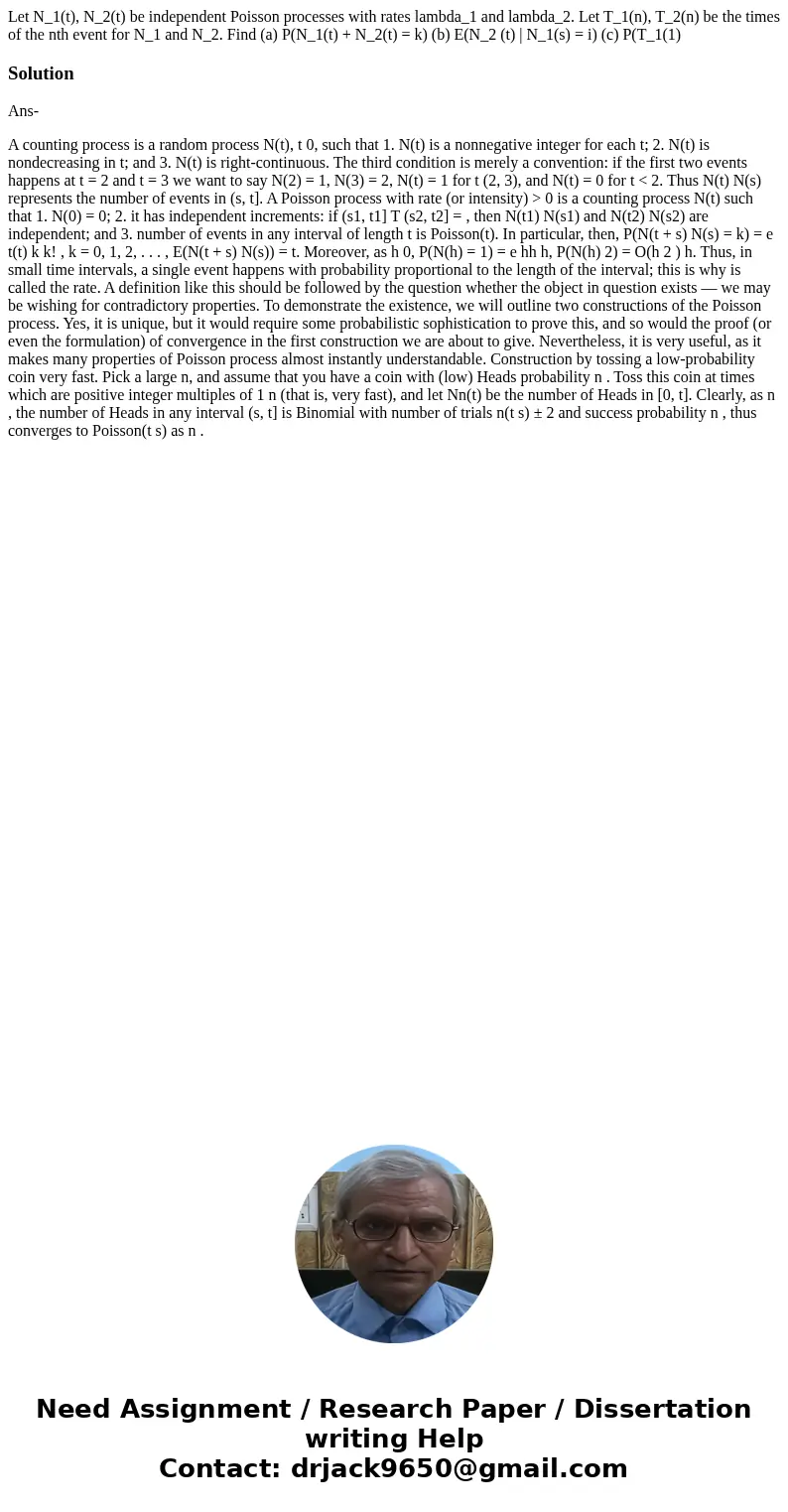Let N1t N2t be independent Poisson processes with rates lamb
Solution
Ans-
A counting process is a random process N(t), t 0, such that 1. N(t) is a nonnegative integer for each t; 2. N(t) is nondecreasing in t; and 3. N(t) is right-continuous. The third condition is merely a convention: if the first two events happens at t = 2 and t = 3 we want to say N(2) = 1, N(3) = 2, N(t) = 1 for t (2, 3), and N(t) = 0 for t < 2. Thus N(t) N(s) represents the number of events in (s, t]. A Poisson process with rate (or intensity) > 0 is a counting process N(t) such that 1. N(0) = 0; 2. it has independent increments: if (s1, t1] T (s2, t2] = , then N(t1) N(s1) and N(t2) N(s2) are independent; and 3. number of events in any interval of length t is Poisson(t). In particular, then, P(N(t + s) N(s) = k) = e t(t) k k! , k = 0, 1, 2, . . . , E(N(t + s) N(s)) = t. Moreover, as h 0, P(N(h) = 1) = e hh h, P(N(h) 2) = O(h 2 ) h. Thus, in small time intervals, a single event happens with probability proportional to the length of the interval; this is why is called the rate. A definition like this should be followed by the question whether the object in question exists — we may be wishing for contradictory properties. To demonstrate the existence, we will outline two constructions of the Poisson process. Yes, it is unique, but it would require some probabilistic sophistication to prove this, and so would the proof (or even the formulation) of convergence in the first construction we are about to give. Nevertheless, it is very useful, as it makes many properties of Poisson process almost instantly understandable. Construction by tossing a low-probability coin very fast. Pick a large n, and assume that you have a coin with (low) Heads probability n . Toss this coin at times which are positive integer multiples of 1 n (that is, very fast), and let Nn(t) be the number of Heads in [0, t]. Clearly, as n , the number of Heads in any interval (s, t] is Binomial with number of trials n(t s) ± 2 and success probability n , thus converges to Poisson(t s) as n .

 Homework Sourse
Homework Sourse